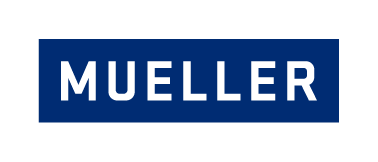Your Plate Heat Exchanger (PHE) is experiencing a leak or clog, and you don't have the flexibility in your schedule to slow down production. While you can not continue to use a plate in this condition due to the risk of a differential leak, waiting for new materials to be purchased can be costly and lead to equipment downtime. What if there was a solution that used the materials you have on hand to fix that faulty gasket? Well, there is! This is referred to as a mixed gasket solution. This solution can also be used when working with fluids that are not compatible with your current gaskets.
Plate Design
When mixing gaskets, you must first understand the design of the plates themselves. There are two different corrugations in the plate pattern. These patterns are called H and V or F and G. Additionally, a plate can be rotated 180° to create a right and left hand plate. Here are the examples of the four possibilities of H and V plates:

Notice that the "hand" is referenced to the port which allows the fluid to flow on the plate surface. The first gasket is left hand H because the fluid flows from the left ports. Again, gaskets are symmetrical, therefore, they can be flipped 180° to determine their orientation. The right hand H plate is simply the left hand H plate rotated.

Gasket Sections

Gaskets have three sections: the periphery, bridge, and port. The port and bridge ensure that the flows are directed correctly through the unit. Additionally, the gap between the port and bridge is a section which allows exterior leakage prior to cross-contamination should a gasket fail in any of the two sections.
There are some instances in which the fluids are not compatible with the same gasket material, and in those cases, we can offer a mixed gasket solution. This can easily be achieved because of the three sections in the gasket.
Mixed Gasket Solution
Based on the nature of the flow design of a plate and frame heat exchanger, we know that the fluid, as it travels through the length of a plate, will only contact the periphery of material "A" in one plate and port of the same material "A" on the next. To achieve this sequence, we must cut the ports away from the periphery. Once cut, the gaskets can be mixed in order to provide each of the fluids with a compatible material. Depending on the model, gaskets can be either Loc-in or Glue-in.
Step 1: Select two gaskets to be mixed and remove them from the plates.
These two gaskets will be different materials that are compatible with different fluids. Keep in mind that left and right hand gaskets are the same gasket, except one has been rotated 180°

Step 2: Cut Ports Away from the Periphery

Step 3: Mix the Gasket Sections
This provides each of the fluids with a compatible material

Step 4: Re-Attach Gaskets Onto the Plates



